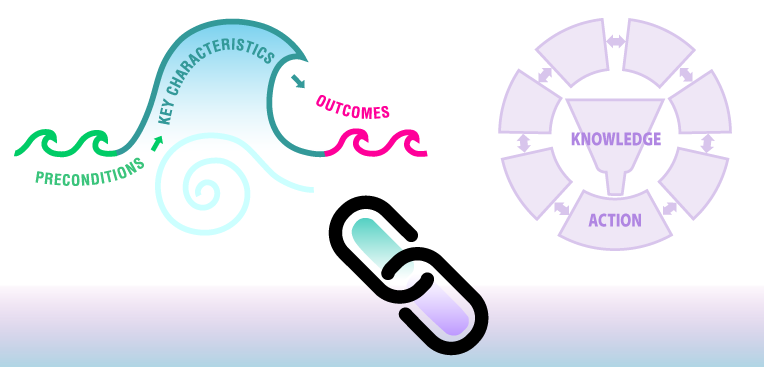

Linking this key characteristic to other elements of the Social Movement Action Framework:
Each of the elements of the Social Movement Action (SMA) Framework is dynamic and interrelated. For example, the bonds of solidarity that support the formation of a collective identity also support shared leadership as seen in the core leadership structures. Collective identity is crucial to individual and collective action. Through the formation of the collective identity, the priority areas of the social movement are determined that express the boundaries of the social movement (i.e., what it is and is not about). In doing so, the urgent need to take action is identified. Collective identity supports achieving a critical mass of people engaged in the social movement and therefore supports momentum.
Linking this key characteristic to the action cycle phases of the Knowledge-to-Action Framework:
You and your change team’s capacity in social movement actions may be enhanced and/or accelerated by the addition of some of the action cycle phases of the Knowledge-to-Action (KTA) Framework, as the two frameworks are complementary. In addition to the linking example described earlier in this section, there can be many other points of connection between the two frameworks. Below are three more examples for your consideration:
- Identify the problem: Identifying the problem can help you and your change team determine the point of connection in relation to a shared concern. This problem/shared concern can foster a sense of solidarity and identity (e.g., identifying with the same problem) and cultivate a collective identity.
- Adapt knowledge to local context: Contexts in which individuals reside can influence how they identify with the shared concern and their sense of belonging to the group. It is important to foster equity and diversity to ensure that the social movement creates an inclusive network comprised of committed individuals with positive close-knit relationships who develop a sense of ‘we-ness’. To achieve this, the background of change agents and the context in which they reside must be considered.
- Assess barriers and facilitators: This phase of the KTA action cycle can guide you and your change team to identify factors that can nurture the collective identity of the group and factors that may impede collective identity from fully developing. Tangible reminders (e.g., pins, logos, branded accessories) of the social movement may act as facilitators because it increases a sense of belongingness and identity. What are other facilitators or barriers that you can identify?
For more discussion about the dynamic links between the elements of the SMA Framework to one another and to the KTA Framework, see the section ‘Accelerate your success with the Leading Change Toolkit™’.
